Crystallography Instrumentation
Jansi UVEX Microscopes
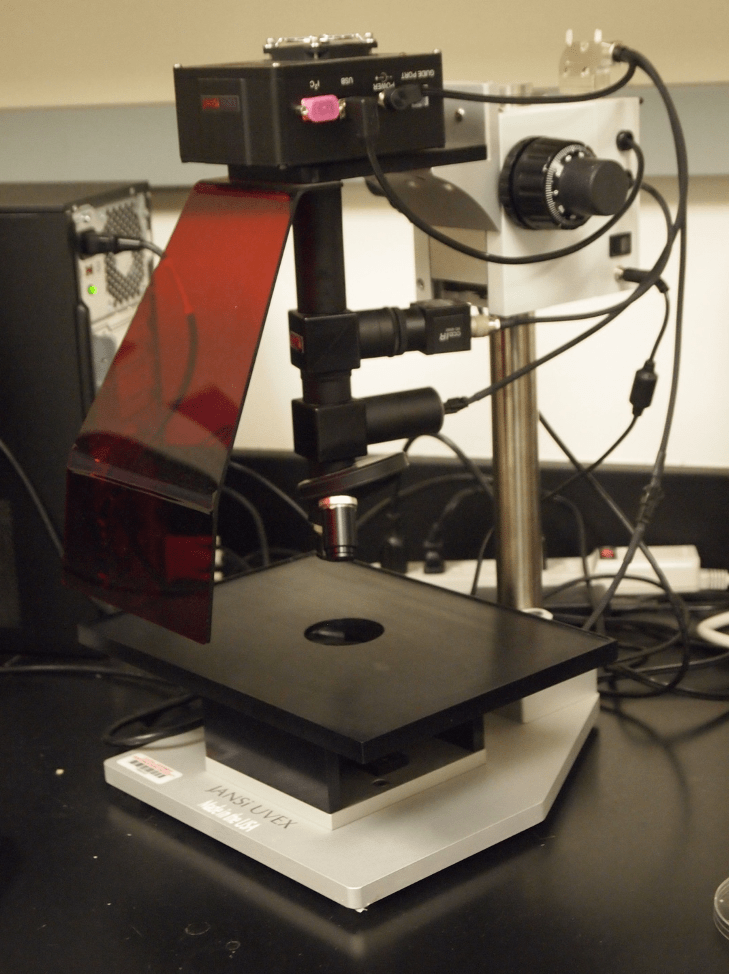
The Jansi UVEX microscopes can be used as a quick method for distinguishing protein from salt crystals. UV excitation at 280nm causes tryptophan fluorescence at 360nm and is the basis for imaging. The microscopes can be used in Brightfield and/or UV modes, and the software produces side by side images in the two modes to aid analysis. Image files are automatically saved. There are two at room temperature, and another in a cold room where crystals are grown at 4°C.
Art Robbins Instruments Gryphon Crystallization Robot
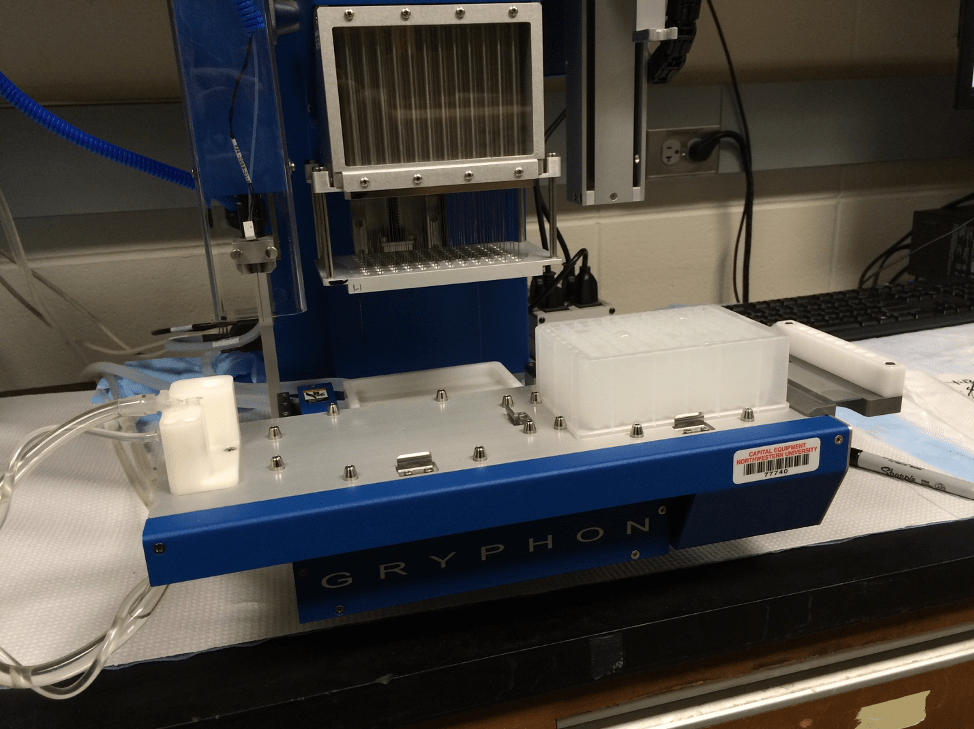
The Gryphon provides a rapid way to set up protein crystallization trays in 96 well format and is very useful for setting up crystallization experiments using commercial screens. It has a 96-channel positive displacement head with a 1-channel non-contact dispenser for combining the protein sample and crystallization solutions. The Gryphon additionally has an LCP head that can be used to set up Liquid Cubic Phase experiments in sandwich plates. Art Robbins Intelliplate-3, three well crystallization plates are available at cost. They allow side by side analysis of crystallization experiments grown under identical conditions in the same chamber. These are particularly useful for crystallization experiments of apo proteins vs proteins co-crystallized in the presence of ligands, or for trying different protein concentrations or additives at the same time.
Art Robbins Instruments Phoenix Crystallization Robot
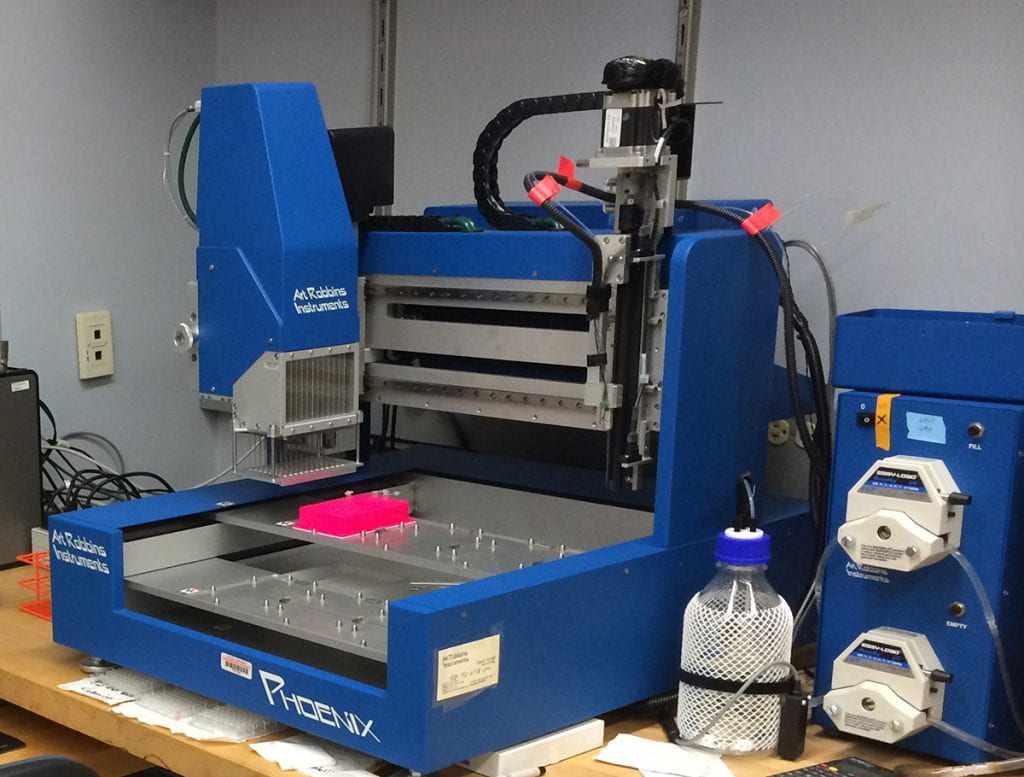
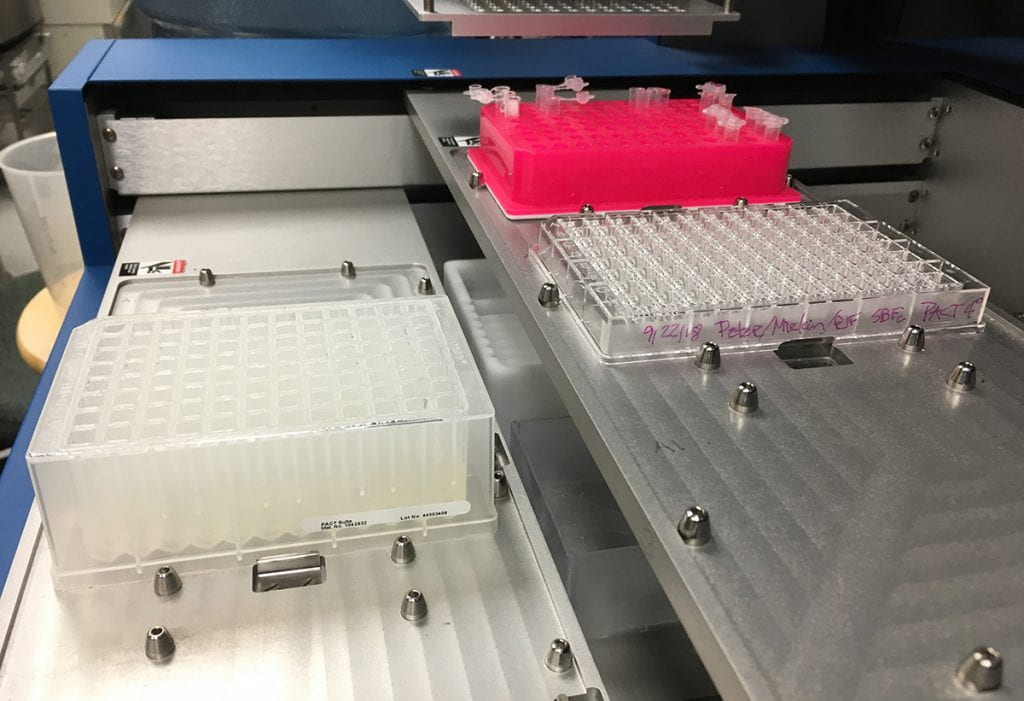 The Phoenix is ideal for protein crystallization screening in 96 well format. The format has 8 positions available to hold either screen blocks or crystallization plates, which allows for high throughput set up of multiple crystallization experiments sequentially with a single protocol. The 96 syringes have flexible needles that accurately dispense from 100 nanoliters to 100 microliters. The nano dispenser has a range down to 100 nanoliters.
The Phoenix is ideal for protein crystallization screening in 96 well format. The format has 8 positions available to hold either screen blocks or crystallization plates, which allows for high throughput set up of multiple crystallization experiments sequentially with a single protocol. The 96 syringes have flexible needles that accurately dispense from 100 nanoliters to 100 microliters. The nano dispenser has a range down to 100 nanoliters.
Dragonfly liquid handler with MX - One Mixer. TTP Labtech
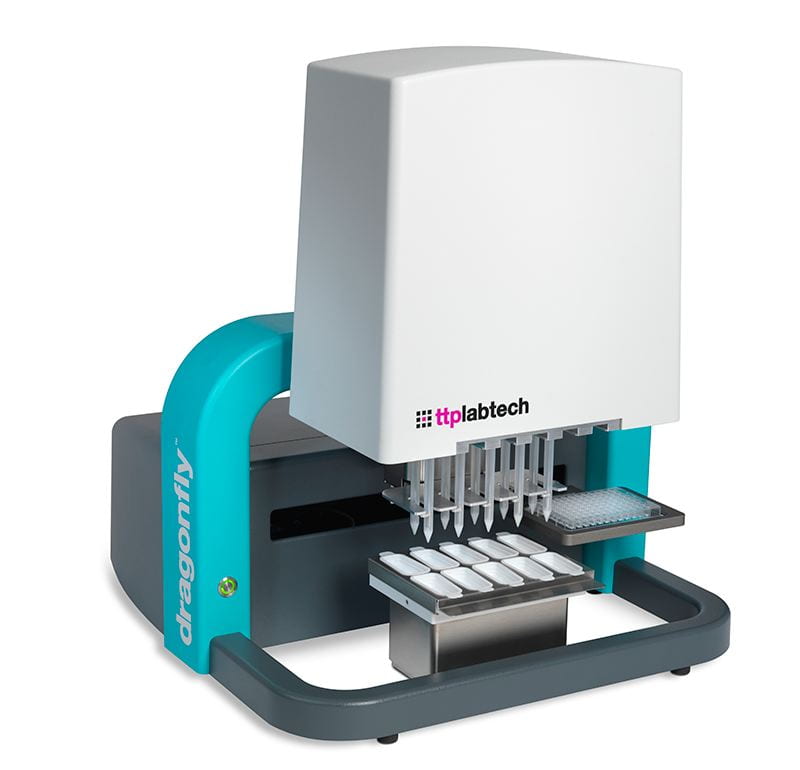
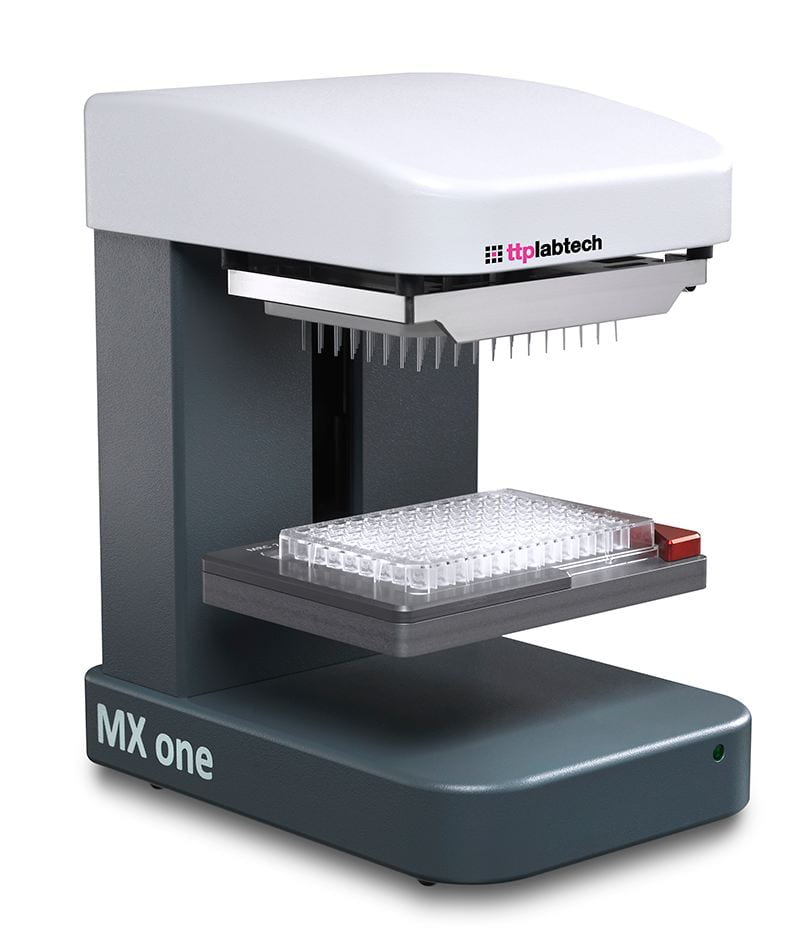 The Dragonfly is a low volume liquid handler allowing for optimization of crystallization conditions and assay development. Gradients can be dispensed into 24/96/384-well plates. The Dragonfly has a MX One mixer for mixing viscous solutions such as those containing PEGs or glycerol.
The Dragonfly is a low volume liquid handler allowing for optimization of crystallization conditions and assay development. Gradients can be dispensed into 24/96/384-well plates. The Dragonfly has a MX One mixer for mixing viscous solutions such as those containing PEGs or glycerol.
Crystallization Screens
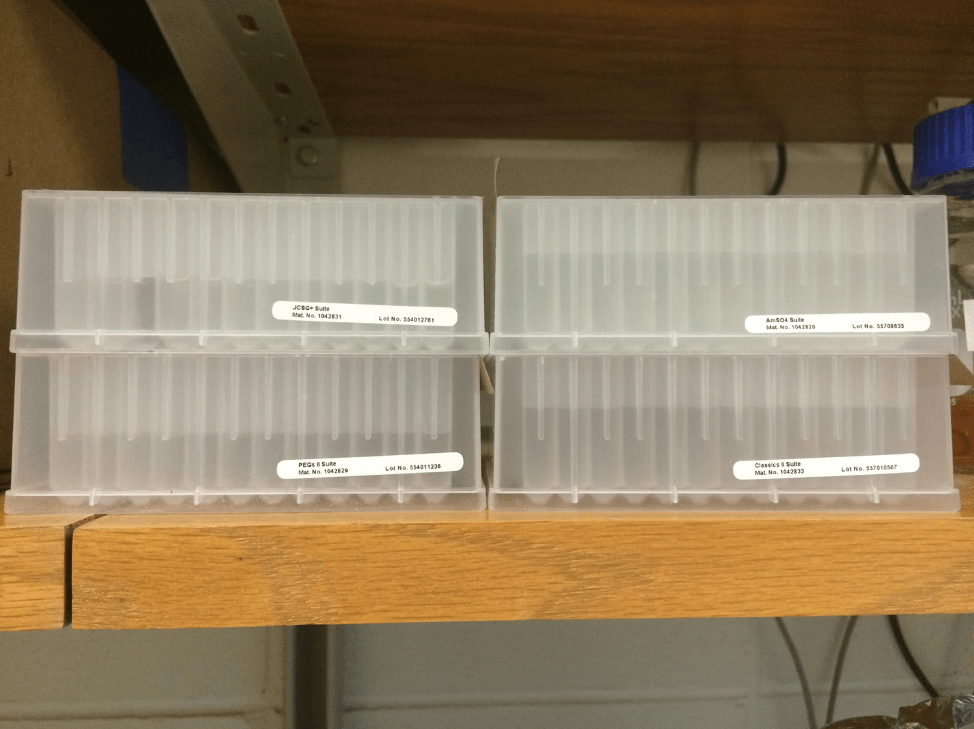
Crystallization screens are available for use at cost. The screens are obtained through commercial sources that guarantee quality control and reproducibility for their products.
Tecan Safire2
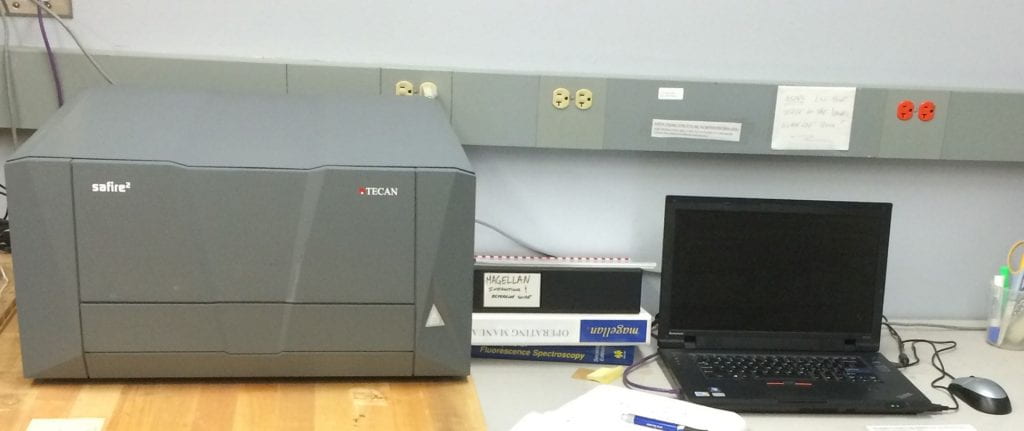 The Tecan Safire2 is a fully modular Quad-4 monochromator-based microplate detection system useful for molecular characterization, modern drug discovery and advanced research applications. It is an excellent instrument for multi-channel Absorbance, Fluorescence Intensity, Time Resolved Fluorescence (TRF), Fluorescence Resonance Energy Transfer (FRET), and multi-channel Luminescence measurements.
The Tecan Safire2 is a fully modular Quad-4 monochromator-based microplate detection system useful for molecular characterization, modern drug discovery and advanced research applications. It is an excellent instrument for multi-channel Absorbance, Fluorescence Intensity, Time Resolved Fluorescence (TRF), Fluorescence Resonance Energy Transfer (FRET), and multi-channel Luminescence measurements.
Access to LS-CAT at the Advanced Photon Source at Argonne National Labs

Administrative support and pre-arranged help with crystal mounting and data collection are available. Beam time is scheduled and coordinated by a Facility Manager who also arranges for the simultaneous use of NU/Argonne pool cars. In addition, all pre and post-experiment safety forms are managed for the user. Data are measured at the Life Sciences Collaborative Access Team (LS-CAT), located at Sector 21 of the Advanced Photon Source (APS) at Argonne National Laboratory. The APS is located 30 miles southwest of Chicago. Northwestern University is a founding member of LS-CAT.
Acknowledgements
All manuscripts and grants presenting work supported by this core should include the following acknowledgement:
This work used resources of the Northwestern University Structural Biology Facility, which is generously supported by NCI CCSG P30 CA060553 grant awarded to the Robert H. Lurie Comprehensive Cancer Center.
If the K2 detector was used:
The Gatan K2 direct electron detector was purchased with funds provided by the Chicago Biomedical Consortium with support from the Searle Funds at The Chicago Community Trust.
If the K3 detector was used: We acknowledge the use of the Ametek K3 direct electron detector, which was generously provided by Professor Robert A. Lamb, Ph.D., Sc.D., HHMI investigator.
If LS-CAT was used: We acknowledge this research used resources of the Advanced Photon Source, a U.S. Department of Energy (DOE) Office of Science User Facility operated for the DOE Office of Science by Argonne National Laboratory under Contract No. DE-AC02-06CH11357. Use of the LS-CAT Sector 21 was supported by the Michigan Economic Development Corporation and the Michigan Technology Tri-Corridor (Grant 085P1000817)